Pilea is a popular houseplant known for its unique foliage and easy-to-care nature. However, black spots on its leaves can be a cause of concern for many plant owners. These spots can indicate a range of issues, including environmental stress, pest infestation, nutrient deficiency, or diseases.
Understanding the causes of black spots on Pilea leaves is crucial in identifying the problem and providing the right treatment. Overwatering and lack of light can cause edema, which leads to the appearance of white and black spots on the leaves.
Pest infestation, such as spider mites, can also cause black spots on the leaves. Additionally, nutrient deficiencies and fertilizer problems can lead to the development of black spots on the leaves.
Proper care and prevention are essential in keeping Pilea healthy and free from black spots. Regularly inspecting the plant for signs of stress, avoiding overwatering, providing adequate light, and using a well-balanced fertilizer can help prevent black spots on Pilea leaves.
Identifying and treating the problem early can also help save the plant from further damage.
Key Takeaways
- Black spots on Pilea leaves can indicate a range of issues, including environmental stress, pest infestation, nutrient deficiency, or diseases.
- Understanding the causes of black spots is crucial in identifying the problem and providing the right treatment.
- Proper care, prevention, and early treatment are essential in keeping Pilea healthy and free from black spots.
Also read:
- Black Spots on Philodendron Leaves
- Black Spots on Pepper Plant Leaves
- Black Spots on Pecan Tree Leaves
Understanding Black Spots on Pilea Leaves
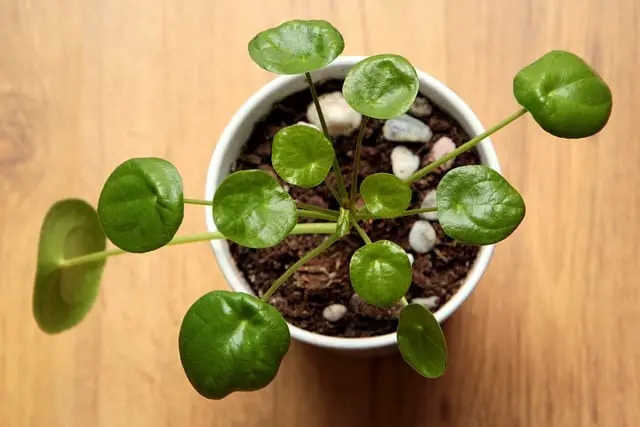
Black spots on Pilea leaves are a common problem that many gardeners face. These spots can appear on the leaf surface and are often a sign of an underlying issue. In this section, we will explore the causes of black spots on Pilea leaves and what you can do to prevent them.
Causes of Black Spots
There are several reasons why black spots may appear on Pilea leaves. Some of the most common causes include:
- Edema Disease: Edema is a common reason why black and white spots appear on the leaves of Pilea. The cause of this phenomenon is excessive watering and lack of light. The basic symptoms that you can observe are the first white spots appearing on the leaves.
- Fungal Infections: Fungal infections can also cause black spots on Pilea leaves. These infections are often the result of overwatering or poor air circulation. Fungal infections can be treated with fungicides, but prevention is key.
- Bacterial Infections: Bacterial infections can also cause black spots on Pilea leaves. These infections are often the result of poor hygiene practices or contaminated soil. Bacterial infections can be treated with antibiotics, but prevention is key.
- Insect Infestations: Insect infestations can also cause black spots on Pilea leaves. These infestations are often the result of poor hygiene practices or contaminated soil. Insect infestations can be treated with insecticides, but prevention is key.
Prevention and Treatment
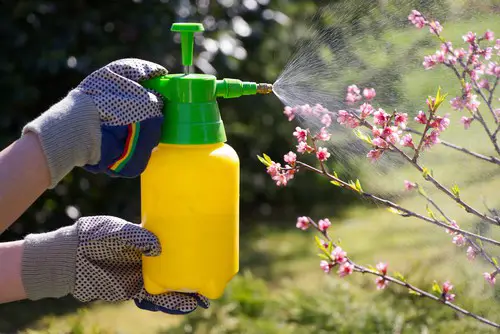
Prevention is key when it comes to black spots on Pilea leaves. Here are some tips to help prevent black spots:
- Proper Watering: Make sure to water your Pilea properly. Overwatering can lead to fungal and bacterial infections, while underwatering can lead to edema disease.
- Proper Hygiene: Make sure to keep your Pilea clean and free of debris. This will help prevent insect infestations and bacterial infections.
- Proper Air Circulation: Make sure to provide your Pilea with proper air circulation. This will help prevent fungal infections.
If you do notice black spots on your Pilea leaves, there are several treatments you can try:
- Fungicides: If the black spots are caused by a fungal infection, you can try using a fungicide to treat the problem.
- Antibiotics: If the black spots are caused by a bacterial infection, you can try using an antibiotic to treat the problem.
- Insecticides: If the black spots are caused by an insect infestation, you can try using an insecticide to treat the problem.
In conclusion, black spots on Pilea leaves can be a sign of an underlying issue. By following the prevention tips and using the appropriate treatments, you can keep your Pilea healthy and free of black spots.
Black Spots on Pilea Leaves – 4 Common Problems
Pilea plants are known for their beautiful and unique foliage, but when black spots appear on their leaves it can be a cause for concern. There are several factors that can contribute to black spots on Pilea leaves, including overwatering, pest infestation, fungal diseases, and incorrect lighting.
1. Overwatering

Overwatering is one of the most common causes of black spots on Pilea leaves. When the roots of the plant are constantly wet, it can lead to root rot, which in turn can cause black spots to appear on the leaves.
To prevent overwatering, it is important to allow the soil to dry out between waterings. It is also important to ensure that the pot has proper drainage to allow excess water to escape.
2. Pest Infestation
Pests such as aphids, mealybugs, spider mites, and thrips can also cause black spots to appear on Pilea leaves. These pests feed on the sap of the plant, which can lead to discoloration and damage to the leaves.
To prevent pest infestations, it is important to regularly inspect the plant for signs of infestation and to take action immediately if pests are detected.
3. Fungal Diseases
Fungal infections such as gray mold (botrytis), white mold (saprophytic fungus), and powdery mildew can also cause black spots to appear on Pilea leaves. These fungal diseases thrive in humid conditions and can spread quickly if left untreated.
To prevent fungal infections, it is important to ensure proper air circulation around the plant and to avoid getting the leaves wet when watering.
4. Incorrect Lighting
Incorrect lighting can also contribute to black spots on Pilea leaves. Too much direct sunlight can cause the leaves to become scorched and develop black spots, while too little indirect light can cause the leaves to become discolored and develop black spots.
It is important to find the right balance of light for your Pilea plant to prevent black spots from appearing on the leaves.
In summary, black spots on Pilea leaves can be caused by a variety of factors including overwatering, pest infestation, fungal diseases, and incorrect lighting. By taking steps to prevent these issues, you can help ensure that your Pilea plant remains healthy and beautiful.
Effects of Environmental Conditions
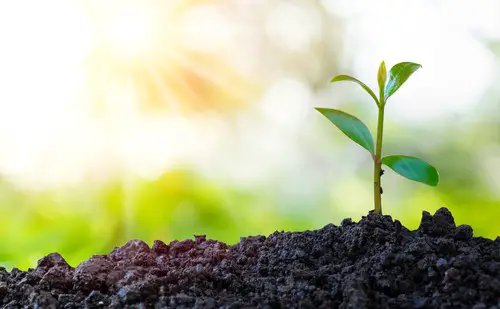
Temperature Stress
Pilea plants are sensitive to temperature and can suffer from stress when exposed to extreme temperatures. High temperatures can cause the leaves to develop black spots, while low temperatures can cause the leaves to turn yellow. The ideal temperature range for Pilea plants is between 60-80ºF.
When exposed to heat stress, Pilea plants may lose their leaves, and the remaining leaves may develop black spots. To prevent heat stress, it is important to keep the plant in a location with adequate air circulation and avoid placing it in direct sunlight.
Poor Air Circulation
Poor air circulation is another environmental factor that can cause black spots on Pilea leaves. When air circulation is poor, moisture can accumulate on the leaves, creating a breeding ground for fungal infections. Fungal infections can cause black spots to develop on the leaves.
To prevent poor air circulation, it is important to place the plant in a location with adequate ventilation. Avoid placing the plant in a drafty area, as this can cause temperature stress. Additionally, it is important to avoid overwatering the plant, as this can lead to excess moisture on the leaves.
In summary, environmental conditions play a significant role in the development of black spots on Pilea leaves. Temperature stress and poor air circulation can both cause black spots to develop.
To prevent these issues, it is important to keep the plant in a location with adequate air circulation and avoid exposing it to extreme temperatures.
Nutrient Deficiencies and Fertilizer Problems
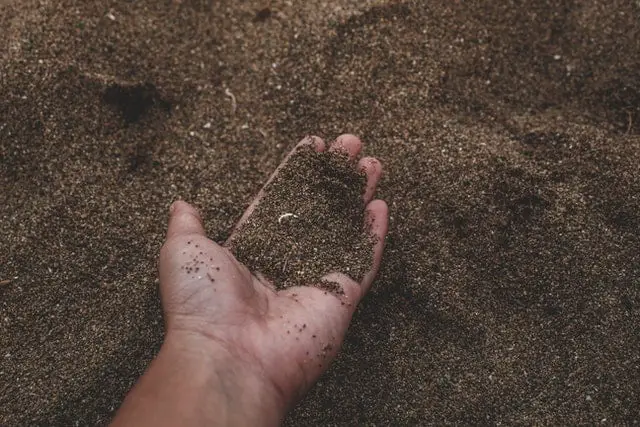
Pilea plants require specific nutrients to grow healthy and produce vibrant foliage. If the plant is not getting enough nutrients, it may develop black spots on the leaves. Nutrient deficiencies can be caused by various factors, including poor soil quality, incorrect watering, and lack of fertilization.
1. Iron Deficiency
Iron is a crucial nutrient that helps plants produce chlorophyll. A lack of iron can cause the leaves to turn yellow and develop black spots. To fix this issue, gardeners can use an iron supplement or a balanced fertilizer that contains iron. Iron supplements can be added to the soil or sprayed directly onto the leaves.
2. Potassium Deficiency
Potassium is an essential nutrient that helps plants regulate water and nutrient uptake. A lack of potassium can cause the leaves to curl and develop black spots. To fix this issue, gardeners can use a fertilizer that contains potassium. Potassium-rich fertilizers can be added to the soil or sprayed directly onto the leaves.
3. Nitrogen Deficiency
Nitrogen is a vital nutrient that helps plants grow healthy and produce lush foliage. A lack of nitrogen can cause the leaves to turn yellow and develop black spots. To fix this issue, gardeners can use a balanced fertilizer that contains nitrogen. Nitrogen-rich fertilizers can be added to the soil or sprayed directly onto the leaves.
Fertilizer problems can also cause black spots on Pilea leaves. Over-fertilization can cause salt build-up in the soil, leading to nutrient deficiencies and black spots. Under-fertilization can cause nutrient deficiencies, leading to black spots.
Gardeners should use a balanced fertilizer and follow the manufacturer’s instructions for proper application.
In conclusion, black spots on Pilea leaves can be caused by nutrient deficiencies and fertilizer problems. Gardeners should ensure that their plants are getting enough iron, potassium, and nitrogen by using a balanced fertilizer and following proper fertilization techniques.
Identifying and Treating Diseases
Pilea plants are susceptible to various diseases, including fungal infections that cause black spots on the leaves. Identifying the root cause of the problem is crucial to determine the appropriate treatment.
1. Root Rot

Root rot is a common fungal disease that affects Pilea plants. It occurs when the soil is too moist, and the roots are unable to absorb oxygen. The roots become soft and mushy, and the plant starts to wilt and die.
To prevent root rot, ensure that the soil is well-drained and not waterlogged. Water the plant only when the top inch of soil is dry. If the plant has already been affected by root rot, remove it from the soil, trim off the affected roots, and repot it in fresh soil.
2. Edema
Edema is a condition that occurs when the plant absorbs more water than it can transpire. The excess water causes the cells to rupture, resulting in blisters or bumps on the leaves. These bumps eventually turn black and become necrotic.
To prevent edema, avoid overwatering the plant and ensure that the soil is well-drained. If the plant has already been affected by edema, reduce watering and increase air circulation around the plant.
3. Leaf Spot
Leaf spot is a fungal disease that causes dark, flattened spots to form on the leaves. The spots are usually circular and have a black center with a yellow or brown halo. The disease spreads rapidly and can cause the leaves to yellow and drop prematurely.
To treat leaf spot, remove the affected leaves and dispose of them. Treat the plant with a fungicide that is effective against Diplocarpon rosae, the fungus that causes black spot. Ensure that the plant has adequate air circulation and is not overcrowded.
In conclusion, identifying and treating diseases is essential to maintain the health of Pilea plants. By following the preventive measures and appropriate treatments for diseases such as root rot, edema, and leaf spot, gardeners can ensure that their plants remain healthy and vibrant.
Prevention and Proper Care of Pilea
Taking proper care of your Pilea plant can help prevent black spots from appearing on its leaves. Here are some essential tips to keep your Pilea healthy and vibrant.
1. Proper Watering
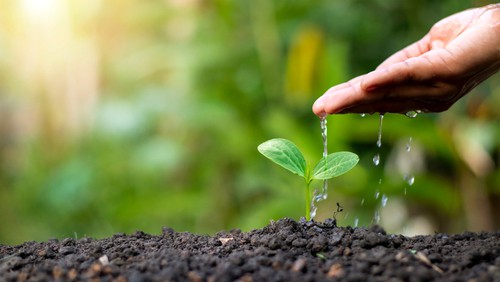
Over-watering is one of the most common mistakes made when caring for Pilea plants. These plants prefer a well-draining potting mix that allows water to flow through quickly. When watering, make sure to allow the soil to dry out slightly between waterings.
A good rule of thumb is to water your Pilea when the top inch of soil feels dry to the touch.
2. Correct Lighting
Pilea plants prefer bright, indirect sunlight. Direct sunlight can scorch the leaves, while too little light can cause the plant to become leggy and weak. Place your Pilea near a bright window, but avoid exposing it to direct sunlight. If your Pilea is not getting enough light, you may notice yellow leaves or slow growth.
3. Pruning and Repotting
Regular pruning can help your Pilea maintain its shape and promote new growth. Use a clean pair of scissors to remove any dead or damaged leaves, and trim back any leggy stems.
Repot your Pilea every 1-2 years to ensure it has enough room to grow. Use a well-draining potting mix and a pot with drainage holes to prevent over-watering.
4. Pest Control
Pilea plants are generally resistant to pests, but they can occasionally be affected by scale or other insects. If you notice pests on your Pilea, use a mild pesticide to control the infestation. Follow the instructions on the label carefully, and avoid over-applying the pesticide, which can damage the plant.
By following these simple tips, you can help prevent black spots from appearing on your Pilea’s leaves and keep your plant healthy and vibrant. Proper care and attention can help your Pilea thrive and bring a touch of greenery to your home.
Conclusion
In conclusion, black spots on Pilea leaves can be caused by various factors, including edema disease, fungal diseases, poor air circulation, incorrect watering, and pest infestation. It is essential to identify the root cause of the problem to apply the appropriate solution.
If the black spots are caused by edema, reducing watering frequency and increasing light exposure can help. If fungal diseases are the culprit, removing the infected leaves and treating the plant with a fungicide can help prevent further spread.
Improving air circulation and avoiding overwatering can help prevent issues caused by poor air circulation and incorrect watering.
It is also important to note that pest infestations can cause black spots on Pilea leaves. Thrips, spider mites, and mealybugs are common pests that can cause such issues. Regularly inspecting the plant for signs of infestation and treating it with an appropriate insecticide can help prevent further damage.
Overall, taking proper care of Pilea plants can help prevent black spots on the leaves and keep them healthy and thriving.
Frequently Asked Questions
How do I treat black spots on my plant leaves?
Treating black spots on plant leaves depends on the cause of the problem. If the black spots are caused by a fungal or bacterial infection, it is important to remove the affected leaves and treat the plant with a fungicide or bactericide.
If the black spots are caused by overwatering, it is important to adjust the watering schedule and allow the soil to dry out between waterings. If the black spots are caused by nutrient deficiencies, it is important to fertilize the plant with a balanced fertilizer.
What causes black spots to form on plant leaves?
Black spots on plant leaves can be caused by a variety of factors, including fungal or bacterial infections, overwatering, nutrient deficiencies, and environmental stressors such as excessive heat or cold.
Why do my Pilea leaves have spots on them?
Pilea leaves can develop black spots for a variety of reasons, including fungal or bacterial infections, overwatering, nutrient deficiencies, and environmental stressors. It is important to identify the cause of the problem in order to properly treat and prevent future occurrences.
What are some ways to prevent black spots on plant leaves?
Preventing black spots on plant leaves involves maintaining proper growing conditions, including proper watering, fertilization, and pest control. It is also important to provide adequate air circulation and avoid exposing plants to extreme temperatures or environmental stressors.
Why are my Chinese money plant leaves developing black spots?
Chinese money plant leaves can develop black spots for a variety of reasons, including fungal or bacterial infections, overwatering, nutrient deficiencies, and environmental stressors.
It is important to identify the cause of the problem in order to properly treat and prevent future occurrences.
How can I stop my Pilea leaves from turning black?
Stopping Pilea leaves from turning black involves identifying the cause of the problem and taking appropriate action.
This may involve adjusting the watering schedule, providing proper fertilization, treating with fungicides or bactericides, and providing adequate air circulation and environmental conditions.

Hey, I’m Lisa and I’ve been an avid gardener for over 30 years. I love writing, talking and living in the garden! Feel free to connect with me on my socials below


